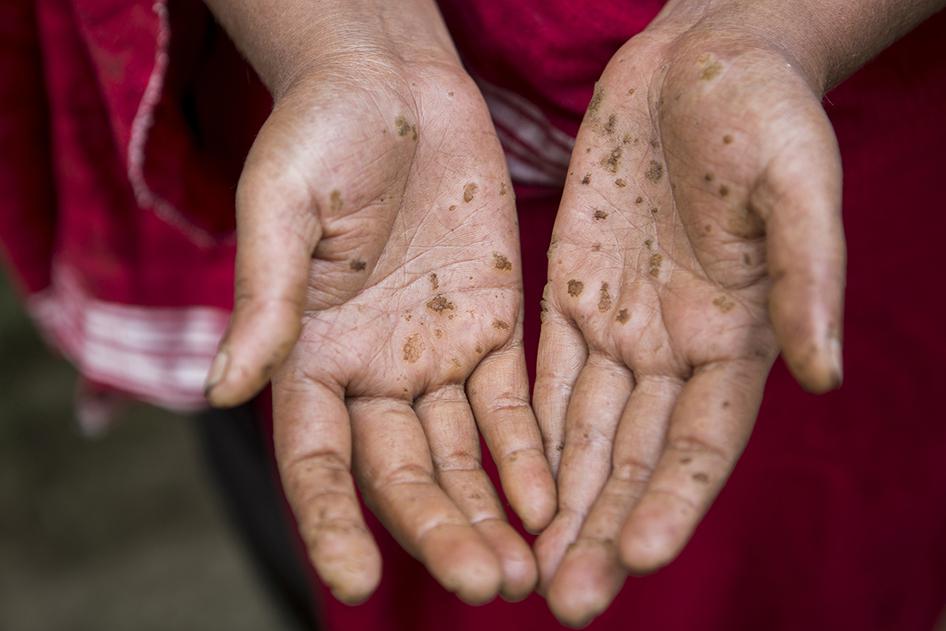
Arsenic poisoning in Bangladesh: Years of proper study due
Bangladesh News Desk
Published:22 Mar 2021, 11:57 AM

Arsenic poisoning in Bangladesh: Years of proper study due
Twenty-eight years have passed since the country first detected arsenic in water, but neither the extent nor the intensity of the chemical element was reduced, say experts.
To make it even worse, no comprehensive study to gauge the intensity of arsenic contamination was done in all these years.
As a result, the government does not have any updated record on the number of arsenic patients in the country, they added.
Also, the government has no exact data on how many persons get infected with arsenicosis or die because of the silent poison every year.
According to a bulletin of the World Health Organization (WHO), conducted in 2012, Bangladesh's arsenic contamination of water was the world's worst mass poisoning.
At least 43,000 people died because of arsenic poisoning every year in Bangladesh, the bulletin read.
Soon after the presence of arsenic in tube-well water was detected in the early 90s, the Department of Public Health Engineering tested arsenic in tube-wells in 2003 all over the country except for Dhaka, Chattogram, Rajshahi, and Khulna zones.
Under the Bangladesh Arsenic Mitigation Water Supply Project (BAMWSP), the department conducted a nationwide screening covering 57,482 villages located in 271 Upazilas.
They found 29 percent out of the 4.95 million surveyed tube-wells were arsenic contaminated.
No such major screening was done ever since to know about that real picture of arsenic contamination.
But the department's annual report for 2019-2020 found the presence of arsenic in tube-wells in 61 out of 64 districts.
"The extent and intensity of the arsenic in the country did not change since the very first detection, but people have learnt how to avoid the contaminated water," said Saifur Rahman, superintending engineer of DPHE Groundwater Circle.
"Now people are aware and using alternative water sources," he told The Daily Star.
He said the department took up a project in 2019 to screening tube-wells in 3,200 unions out of 4,500 unions across the country to see the extent of the arsenic.
The screening activity is likely to complete by this year, said Saifur.
Under this project, arsenic-contaminated tube-wells will be painted red and arsenic-free tube-wells will be painted green. The tube-wells that contaminated water will be replaced under this project, he added.
Arsenic is a chemical substance that forms several poisonous compounds.
It is widely distributed throughout the earth's crust and can be released into the environment and water through natural and human activities.
Chronic exposure to arsenic results in various ailments in the body, causing multiple dermatologic signs and even skin cancer (especially in palms, soles, and abdomen), non-specific abdominal pain, and lung and bladder cancer.
Experts said although people are now more aware of the danger of arsenic, the problem still exists to a quite large extent.
Prof Quazi Quamruzzaman, who has been studying arsenic since 1993, said Bangladesh have a very practical National Arsenic Mitigation policy, but it is only partially implemented.
"It should be properly implemented to save lives," he said.
"Arsenic mitigation is one of the most successful achievements for Bangladesh. But the problem is it still exits but not in the scale which WHO mentioned in 1998 that 2 lakh people will die of arsenic-related cancer in Bangladesh," he added.
Quamruzzaman, an Ekushey Padak winner, said, "We have still a long way to go and need to work especially in some remote areas where the problem still exits with serious health problems."
Water resource and climate change specialist Ainun Nishat said the problem is environmental and it still exists in the environment.
"It is true that people became aware of arsenic pollution. The government should take the issue seriously as it is a silent killer."
About the lack of a comprehensive study, he said, "It is a shame for us that it is our problem but we are dependent on the donors' funds for research."
The government, however, in recent years stressed research and hope that a detailed study would be done to assess the arsenic situation in the country.